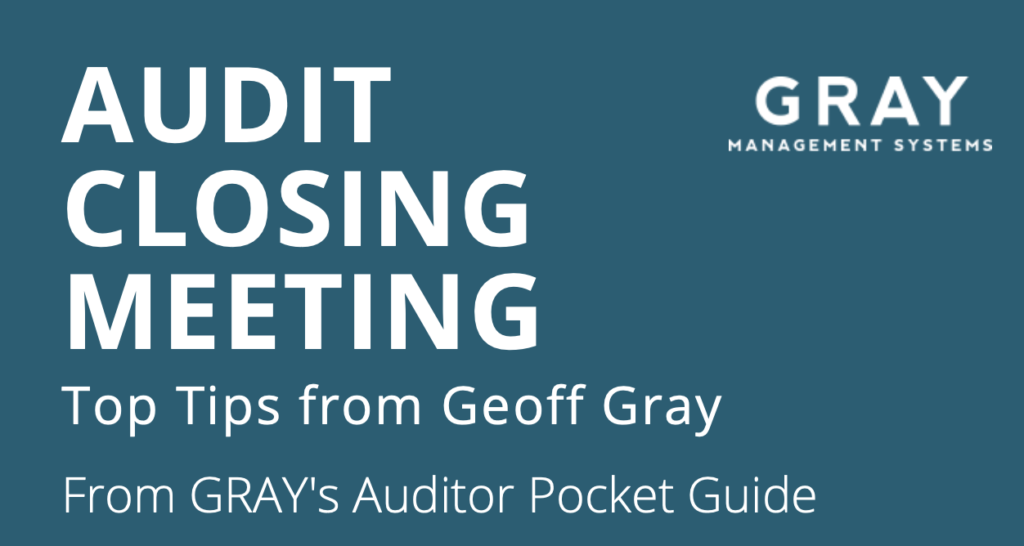So you’re coming to the end of the audit. You are busy typing up your audit findings and have communicated any action items/ non-conformances along the way with the auditee. Now it is time to close out the audit with an effective Closing Meeting.
Why conduct a Closing Meeting?
Reporting your findings and learnings as a result of the audit process is an important step to ensure the auditee and anyone else with a vested interest has understood what has occurred. It is an important opportunity to clarify the scope and objectives of the audit whilst providing an overview of the audit activities that took place, such as persons spoken to, processes observed and documents verified.
If you have maintained communication with the auditee throughout the process, there should be no major surprises during the closing meeting. Rather it is an activity to tie up the loose ends, agree upon timeframes for any action items/ corrective actions and so on.
The length and degree of formalities will differ depending on the type of audit you have conducted. However, the following is a basic guide that will assist auditors to close out the audit professionally.
Start off positively by thanking the auditee for hosting the audit. If you found the process owners or other staff helpful during the audit- tell them so! People are busy so acknowledging the staff who participated and assisted during the audit is important. This will also help to establish a strong rapport for future audit activities. Don’t forget to communicate all the positive findings too.
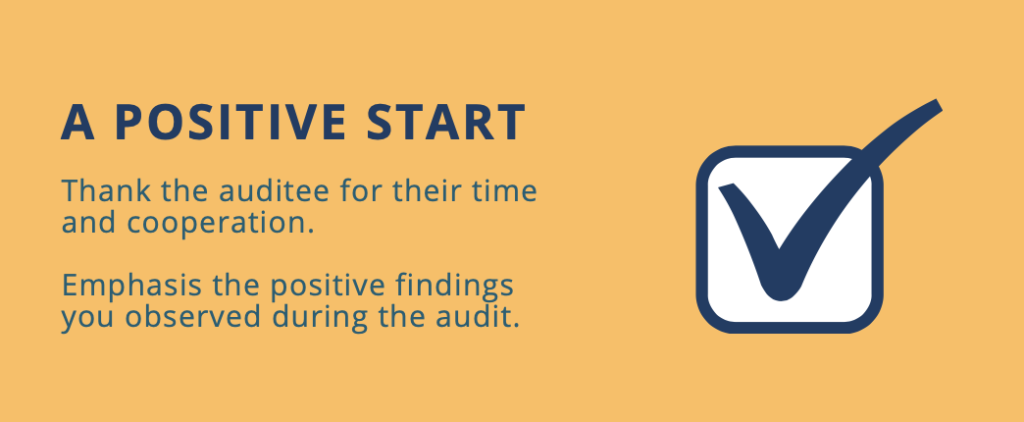
If you have had to sign or commit to any confidentiality requirements it is a great time to reconfirm the agreement where applicable. It demonstrates not only your professionalism as an auditor but may provide comfort to the auditee. Reconfirm any specific terminology that will be contained in your audit report. This will ensure everyone understands what you are talking about. Will you be talking about non-conformances like third party auditors or will you call these action items? Businesses may have a variety of terms they prefer to use. Just may sure you define terms and be consistent with their use.
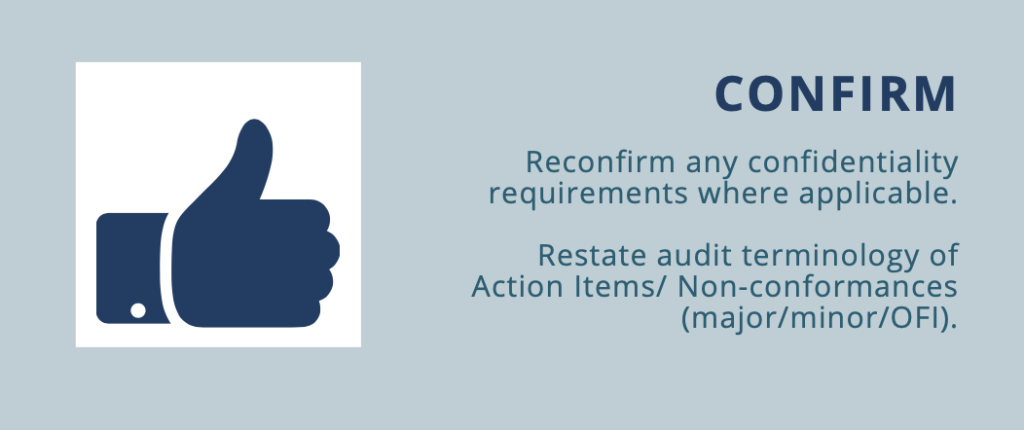
Now it is time to present the audit findings. Mention that your findings are based upon a sample and that other issues may still exist that your sampling did not uncover. In a formal audit, this is called a sampling disclaimer.
It is very important that your audit findings contain the facts, reference to criteria and it is clear.
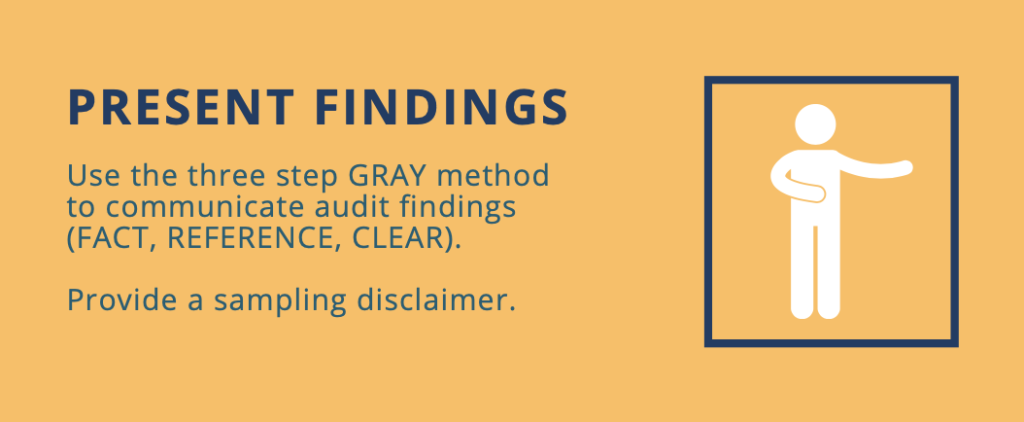
Lastly, summarise the overall audit outcome. What was the overall level of compliance discovered? Obtain an agreement regarding the timeframes for corrective actions using a risk-based method. Ensure a copy of the audit report is completed in a timely manner and provided to the auditee. This is especially important where corrective action has been identified and it demonstrates your professionalism and capability as an auditor.
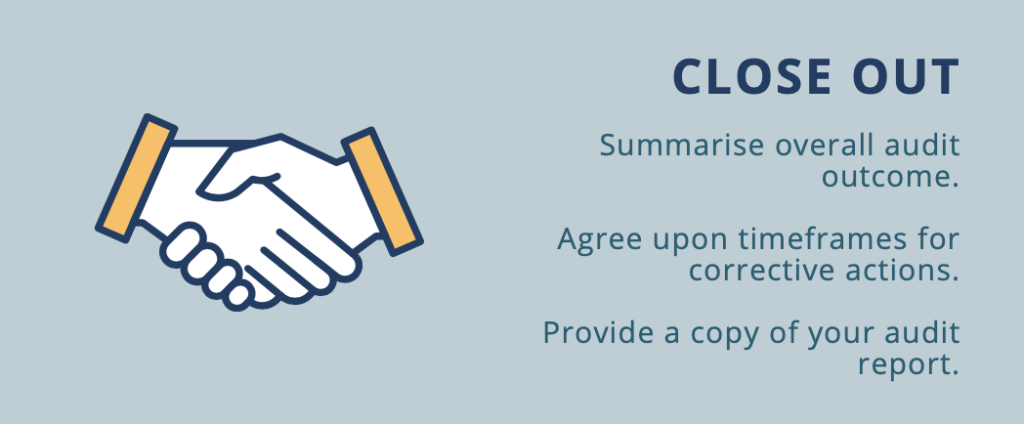
Depending on the size, complexity and type of audit you are conducting the nature and complexity of the closing meeting will vary. Planning the closing meeting using these four steps will guide any auditor in the right direction.
If you would like further information regarding our auditor training courses, please Contact us or register now.

